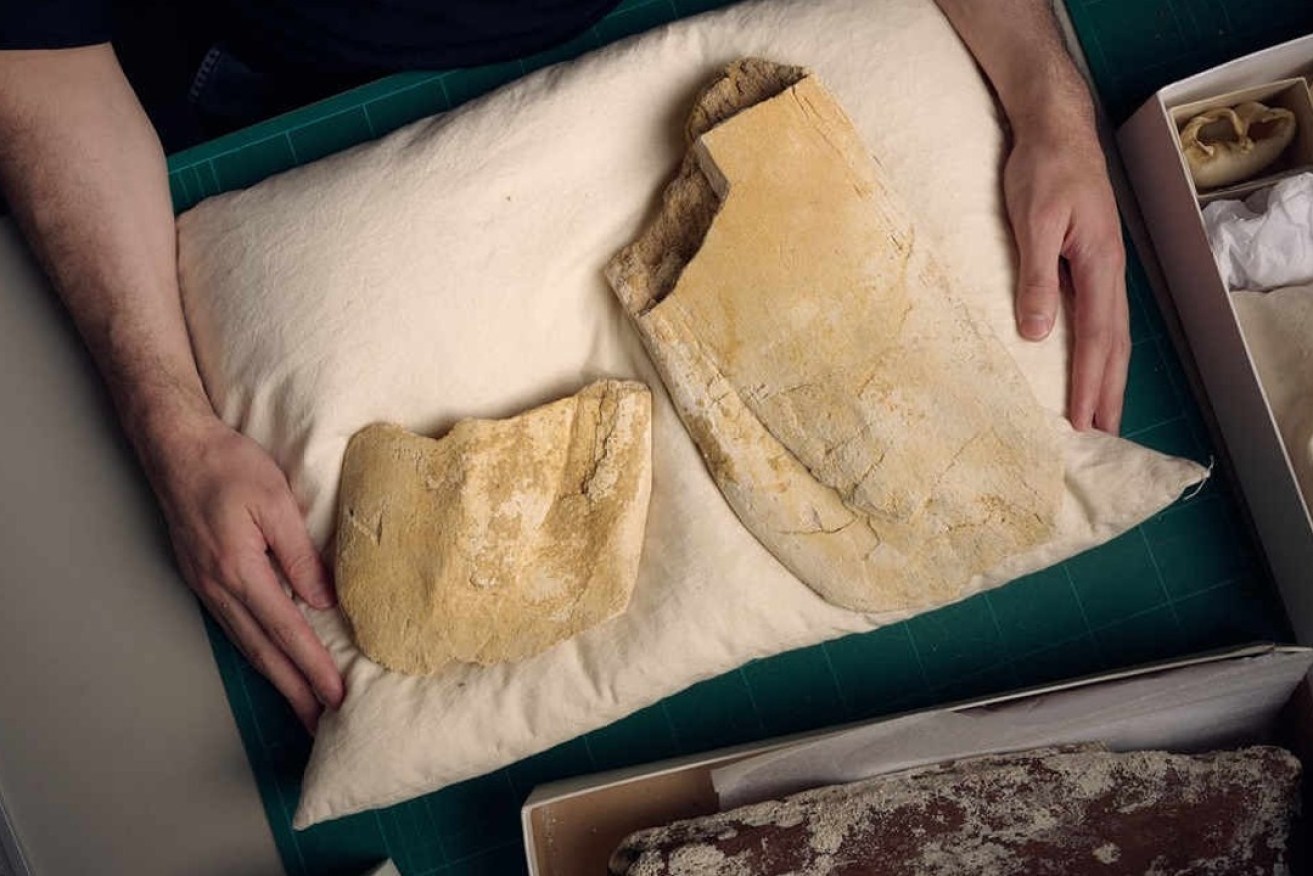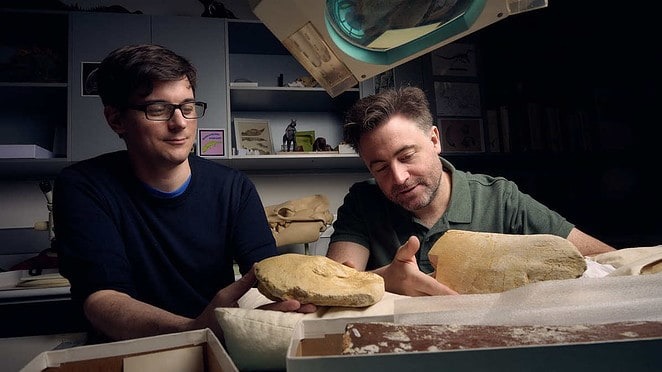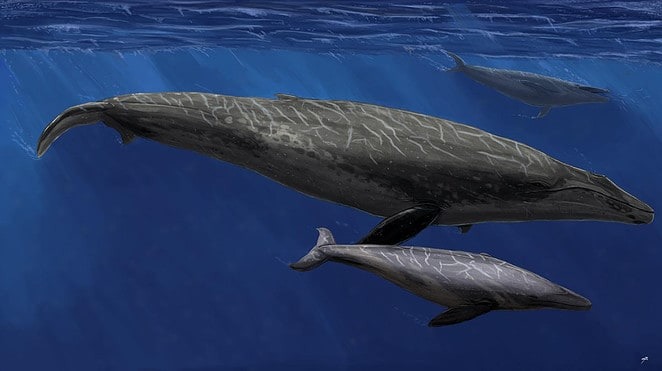Oldest large baleen whale fossil found in South Australia
A 19-million-year-old baleen whale fossil found on the banks of the River Murray is challenging previous ideas about the species’ evolution.

Photo by Eugene Hyland. Credit: Museums Victoria Research Institute.
The fossil was recovered on the east bank of the river opposite Wongulla, 8km from Walker Flat, and was studied by a team of palaeontologists led by Monash University’s Dr James Rule in collaboration with Dr Erich Fitzgerald of Museums Victoria Research Institute.
Baleen whales are the largest animals to have ever lived, eclipsing even the biggest dinosaurs. They have baleen instead of teeth which they use to sieve and collect krill, plankton and other small fish for food. Baleen is made of keratin, the same protein found in hair and fingernails.
There are 14 species of baleen whale, and they tend to be much larger than toothed whales, except in the case of the toothed sperm whale which is also massive.

Dr Erich Fitzgerald (right) and Dr James Rule (left) with the baleen whale fossil at Museums Victoria Research Institute. Photo by Eugene Hyland. Credit: Museums Victoria Research Institute.
The largest species is the blue whale which can reach lengths of more than 30 metres and routinely reach 150 tonnes – double the mass of the largest dinosaurs.
But when and where did baleen whales evolve their immense size?
As a whole, whales first evolved from mammals like Pakicetus which began making the transition from land to water about 50 million years ago. Large whales like Basilosaurus and contender for the heaviest animal ever, Perucetus, lived 40–34 million years ago. But these early whales were toothed.
The earliest baleen whale that has been found is Mystacodon which lived 36 million years ago. But the holotype specimen suggests these animals reached only 4 metres in length.
Until now, the fossil record has shown that baleen whales without teeth didn’t exceed 8 metres until about 10 million years ago.
But the new fossil pushes the emergence of large toothless baleen whales back to twice as long ago.
The fossil is about 19 million years old. Using fragments of the extinct whale’s jawbone and comparing to modern whales, the palaeontologists estimate that the ancient whale would have measured about 9 metres in length.
It also suggests that large size in baleen whales may have first evolved in Earth’s southern oceans.

Early Miocene baleen whale artwork by Ruairidh Duncan. Credit: Museums Victoria Research Institute.
“This baleen whale fossil is significant as it reveals where baleen whales evolved their gigantic size, but also disrupts previous theories as to when baleen whales evolved their large size,” Rule, first author of the new study, tells Cosmos. “We can tell this fossil is from a baleen whale because of two key characteristics: It is edentulous (meaning it lacks teeth), and the two mandible halves are not fused together. In modern baleen whales, these characteristics are part of their filter-feeding strategy.”
Baleen whales play an important role in marine ecosystems. The find suggests they have played this role for a lot longer than previously thought.
“The large size of today’s whales is a key part of their biology, and helps them to eat more efficiently, and travel long distances. Upon death, their enormous carcasses also provide food for deep sea animals. This fossil, along with others from the Southern Hemisphere, inform us that whales have been big for a long time, and their role as ecosystem engineers may have extended as far back as about 19 million years ago.”
The research is published in the Proceedings of the Royal Society B.
This story first appeared in Cosmos.




